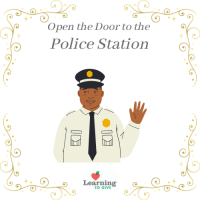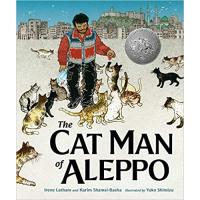Open the door to your local police station and find out what they do to make your community a better place. A local police department serves communities by keeping people safe, enforcing laws, developing relationships, and making sure young people have the resources they need. Learn about this organization and how you can help.
This is the true story of a man who stayed behind in his community when war struck his Middle Eastern country of Syria. While bombs fall and everyone else seeks safety, we see his commitment to maintaining the home and community he loves. When most of his neighbors left to find safety, he...
Through the voices of an immigrant and refugee, youth gain empathy and understanding of the experience of leaving your home for a new place.
- Read more about Immigrants and Refugees
- Log in or register to post comments
Cultures are sometimes represented through clothing items like head wear or colors. These clothing items can be very meaningful and important, and it is respectful to learn about others and what their cultural expression means to them. It is never okay to mock someone for what they wear or to say they shouldn't wear it because it is different. This lesson raises awareness of the meaning of cultural expression and the danger of stereotypes.
- Read more about Culture-Based Apparel
- Log in or register to post comments
One of the ways we identify ourselves is through the culture of our gender identity. This may include our gender and how we express ourselves through our clothing, hair, and what we like to do and who we like to spend time with. This lesson raises awareness of the variety of ways people express who they feel they are.
- Read more about Gender Identity and LGBTQ+
- Log in or register to post comments
In this lesson, youth become aware and gain empathy for the discrimination people experience because of their race, age, gender, and other reasons. The group discusses ways to be inclusive. A Mix it Up Day changes our familiar boundaries and helps us connect to new people.
- Read more about Understanding Discrimination
- Log in or register to post comments
This lesson explores the language of disability and the importance of asking people about themselves with curiosity rather than treating disabilities as taboo. We learn to use people-first language.
- Read more about The Language of Disability
- Log in or register to post comments
One of the keys to unlocking cultural competence is reading diverse books with characters and locations that represent a variety of cultures. In this activity, young people define and discuss the value of representation. They do an audit of a book collection to identify representation and gaps. As a goal, they seek to fill gaps in representation by adding books to the collection.
- Read more about Representation
- Log in or register to post comments
We define culture and explore the cultural traits of individuals and the group collectively.
- Read more about What Is Culture?
- Log in or register to post comments
When Stella loses pleasure in her classwork, she takes us “through the cracks” of a classroom and shows what is happening to all of the students who are not interested and engaged in their learning. We visit classrooms where students are actually learning because their emotional,...


